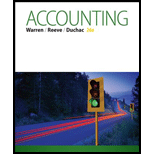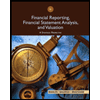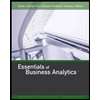
(a)
Profit margin: This ratio gauges the operating profitability by quantifying the amount of income earned from business operations from the sales generated.
Formula of profit margin:
Investment turnover: This ratio gauges the operating efficiency by quantifying the amount of sales generated from the assets invested.
Formula of investment turnover:
Formula of ROI according to Dupont formula:
Return on investment of MN Segment, PR Segment, SE Segment, and CP Segment, using Dupont formula
(a)
Explanation of Solution
Determine ROI of MN Segment, if income from operations is $6,818,000,000, sales are $20,356,000,000, and assets invested are $28,627,000,000.
Determine ROI of PR Segment, if income from operations is $2,220,000,000, sales are $14,087,000,000, and assets invested are $22,056,000,000.
Determine ROI of SE Segment, if income from operations is $661,000,000, sales are $5,979,000,000, and assets invested are $14,750,000,000.
Determine ROI of CP Segment, if income from operations is $1,112,000,000, sales are $3,811,000,000, and assets invested are $7,506,000,000.
(b)
To explain: The differences in profit margin, investment turnover, and return on investment of MN Segment, PR Segment, SE Segment, and CP Segment
(b)
Explanation of Solution
The following are the differences in profit margin, investment turnover, and return on investment of MN Segment, PR Segment, SE Segment, and CP Segment:
- Profit margin and investment turnover of MN Segment are high comparably, with 33.5%, and 0.71 and producing high ROI of 23.8%.
- Investment turnover of SE Segment is very low comparably and produces low ROI of 4.6%.
- CP Segment stands in the second place with 29.2% profit margin and produces ROI of 14.9%.
- PR Segment stands in the third place with 0.64 investment turnover and produces ROI of 10.1%.
Want to see more full solutions like this?
Chapter 24 Solutions
Bundle: Accounting, Loose-Leaf Version, 26th + LMS Integrated for CengageNOW, 2 terms Printed Access Card
- Can you solve this financial accounting problem with appropriate steps and explanations?arrow_forwardPlease provide the answer to this financial accounting question using the right approach.arrow_forwardOn January 1, 2024, Sunfish Co. issued a $22 million, 8%, 6-year convertible bond with annual coupon payments. Each $1,000 bond was convertible into 35 shares of Sunfish's common shares. Shark Investments purchased the entire bond issue for $22.7 million on January 1, 2024. Shark estimated that without the conversion feature, the bonds would have sold for $21,013,098 (to yield 9%). On January 1, 2025, Shark converted bonds with a par value of $8.8 million. At the time of conversion, the shares were selling at $30 each. Required Prepare the journal entry to record the issuance of convertible bonds. Prepare the journal entry to record the conversion according to IFRS (book value method). Prepare the journal entry to record the conversion according ASPE (market value method).arrow_forward
- RoseBud Motel Ltd. (RM) had 100,000 ordinary shares outstanding during all of 2025, all owned by the owner Johnny Rose. In 2023, RM issued $500,000, 3% non-cumulative preferred shares. Each $100 preferred share is convertible into one ordinary share. RM also had 6,000, $100 cumulative preferred shares outstanding that are each entitled to an annual dividend of $1.60. Each preferred share is convertible into two ordinary shares. RM’s net income for the year ended December 31, 2025, was $400,000. Its income tax rate was 20%. The annual dividend was declared and paid during 2025 on the cumulative preferred shares but not on the non-cumulative shares. Required Calculate RM’s basic EPS for 2025. Are the non-cumulative convertible preferred shares dilutive or antidilutive in nature? The cumulative convertible preferred shares? Support your answer with calculations. Calculate RM’s diluted EPS for 2025.arrow_forwardGive correct answer this general accounting questionarrow_forwardHogwarts Inc. (HI) had 80,000 ordinary shares outstanding on January 1, 2025. Transactions throughout 2025 affecting its shareholdings follow. February 1: HI issued 200,000, $10, cumulative 10% preferred shares. March 1: HI issued 40,000 ordinary shares. April l: HI declared and issued an 8% stock dividend on the ordinary shares. July 1: HI repurchased and cancelled 30,000 ordinary shares. October 1: HI declared and issued a 3-for-l stock split on the ordinary shares. December 31: HI declared $99,600 in dividends on the ordinary shares. Net income for the year ended December 31, 2025, was $600,000. Its tax rate was 40%. Required What was the weighted average number of ordinary shares outstanding in 2025? What was the basic EPS in 2025? If the preferred shares issued on February 1, 2025, were non-cumulative, what would basic EPS for 2025 have been?arrow_forward
 Managerial AccountingAccountingISBN:9781337912020Author:Carl Warren, Ph.d. Cma William B. TaylerPublisher:South-Western College Pub
Managerial AccountingAccountingISBN:9781337912020Author:Carl Warren, Ph.d. Cma William B. TaylerPublisher:South-Western College Pub Financial And Managerial AccountingAccountingISBN:9781337902663Author:WARREN, Carl S.Publisher:Cengage Learning,
Financial And Managerial AccountingAccountingISBN:9781337902663Author:WARREN, Carl S.Publisher:Cengage Learning, Financial Reporting, Financial Statement Analysis...FinanceISBN:9781285190907Author:James M. Wahlen, Stephen P. Baginski, Mark BradshawPublisher:Cengage Learning
Financial Reporting, Financial Statement Analysis...FinanceISBN:9781285190907Author:James M. Wahlen, Stephen P. Baginski, Mark BradshawPublisher:Cengage Learning- Principles of Accounting Volume 2AccountingISBN:9781947172609Author:OpenStaxPublisher:OpenStax College
 Accounting Information SystemsAccountingISBN:9781337619202Author:Hall, James A.Publisher:Cengage Learning,
Accounting Information SystemsAccountingISBN:9781337619202Author:Hall, James A.Publisher:Cengage Learning, Essentials of Business Analytics (MindTap Course ...StatisticsISBN:9781305627734Author:Jeffrey D. Camm, James J. Cochran, Michael J. Fry, Jeffrey W. Ohlmann, David R. AndersonPublisher:Cengage Learning
Essentials of Business Analytics (MindTap Course ...StatisticsISBN:9781305627734Author:Jeffrey D. Camm, James J. Cochran, Michael J. Fry, Jeffrey W. Ohlmann, David R. AndersonPublisher:Cengage Learning





